Adapting to a Warming Arctic
By Dr. Alexandra Middleton
About 4 million people live permanently in the Arctic region, of whom 10% are Indigenous peoples. The Arctic is warming twice as fast as the rest of the planet. Climate change represents a security challenge because of its overarching impact on the economy, human livelihoods and biodiversity in the Arctic. How are the Arctic states cooperating via institutions such as the Arctic Council and Arctic Economic Council to create solutions to address these climate change security challenges? Are Arctic states adhering to their climate change commitments of the 2015 Paris Agreement and is climate change viewed as an integral part of the Arctic strategies of the eight Arctic states?
An existential threat
Security is the condition of being protected from or not exposed to danger. Climate change is a security concern of existential scale since it threatens the existence of entire nations, affects water and food security, biodiversity, and results in forced migration and potential conflicts. Climate change security is tightly linked to sovereignty and control over resources. For instance, when sea levels rise, resulting in loss of territory, or when land becomes hostile to life and agriculture, it creates threats to a nation’s wealth and military security. Climate change inevitably affects the socioeconomic situation of a country and its population, especially the economic, health and food pillars of human security. The consequences of climate change create inequalities and expose people to new diseases. Climate change security is paramount at global, national, community and individual levels.
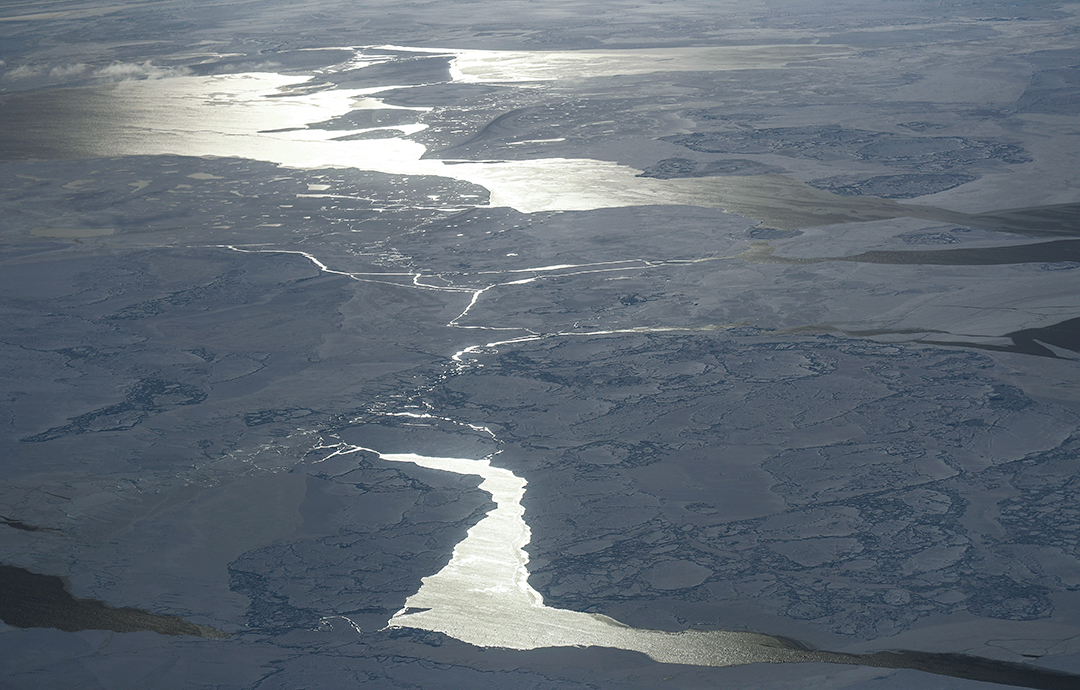
Arctic amplification
The Arctic has multiple definitions, but often it is referred to as the land and sea areas of eight Arctic states: Canada, Denmark (via Greenland), Finland, Iceland, Norway, Russia, Sweden and the United States. One common definition of the Arctic is the area beyond the Arctic Circle, the parallel of latitude located at 66.33N. Additionally, the Arctic includes the territory of the High Arctic Seas, that is, the international waters of the Arctic Ocean at least 200 nautical miles away from the shores of the Arctic coastal states.
The Arctic is especially vulnerable to climate change. As per the U.S. National Snow and Ice Data Center, over the past 30 years the Arctic has warmed at roughly twice the rate of the entire globe, a phenomenon known as Arctic amplification. The Arctic Ocean has lost more than 40% of its summer sea ice since the 1980s and is expected to be ice-free as early as the summers of the 2030s. According to the “Arctic Report Card 2020,” produced by the U.S. National Oceanic and Atmospheric Administration, the Arctic experienced exceptionally warm spring air temperatures across Siberia and the lowest June snow cover across the Eurasian Arctic in the past 54 years. In 2020, extreme wildfires in the Sakha Republic of northern Russia were caused by unparalleled warm air temperatures and record snow loss for the Arctic region.
Hence, climate change in the Arctic is not a distant prospect, but a phenomenon experienced and felt by local communities and Indigenous peoples. There have been occurrences of collapsing infrastructure as a result of permafrost thaw and landslides. Indigenous peoples suffer from losses of traditional livelihoods because of the rising temperatures that interfere with reindeer herding and other activities.
Protecting the environment
It was 30 years ago that the Arctic states recognized the protection of the environment as an imminent concern. In 1991, the Arctic Environmental Protection Strategy (AEPS) was signed by ministers of all the Arctic countries in Rovaniemi, Finland. Environmental concerns, being a politically neutral topic, were mutually accepted by all parties and required collaborative actions to solve. Cooperation under AEPS subsequently led to the formation of the Arctic Council, an intergovernmental forum for promoting cooperation among Arctic nations, Indigenous communities and other Arctic inhabitants. The Arctic Council, founded in 1996 by the Ottawa Declaration, is composed of eight member nations, six permanent Indigenous groups and observers (non-Arctic states, intergovernmental and interparliamentary organizations and nongovernmental organizations). The Ottawa Declaration provided the opportunity for non-Arctic countries and governmental and nongovernmental organizations with Arctic interests to participate actively, as observers, in the work of the council, and to draw on their experiences.
The work of the Arctic Council was originally organized into four working groups that originated from the AEPS: the Arctic Monitoring and Assessment Program (AMAP), Conservation of Arctic Flora and Fauna (CAFF), Protection of the Arctic Marine Environment (PAME), and Emergency Prevention, Preparedness and Response (see Figure 1). In 1998, the Sustainable Development Working Group (SDWG) was founded to address the human dimensions of the Arctic, focusing on the three pillars of sustainable development: social equity, economic development and environmental protection. The sixth working group, the Arctic Contaminants Action Program (ACAP), was originally founded as an Arctic Council plan to address pollution sources identified through AMAP. It became the sixth permanent working group in 2006, aimed at providing a strengthening and supporting mechanism to encourage national actions to reduce emissions and other releases of pollutants.
Since their formation, the Arctic Council working groups have facilitated over 100 projects with significant contribution to the understanding of environmental and human change in the Arctic. All working groups have had projects that studied climate change. The SDWG has led four projects directly addressing climate change: Arctic Adaptation Exchange: Facilitating Adaptation to Climate Change; Arctic Indigenous Youth, Climate Change and Food Culture; the Economy of the North; and the Arctic as a Food Producing Region. AMAP’s work on climate change has been contributing to Intergovernmental Panel on Climate Change reports. Among others, the AMAP working group led a project titled Climate Issues: Snow, Water, Ice and Permafrost in the Arctic. ACAP contributed with work on phasing out ozone-depleting substances and fluorinated greenhouse gases at fish and seafood processing enterprises. PAME’s work on Specially Designated Arctic Marine Areas has been influential for climate change science. CAFF’s work focused on climate change impact on Arctic biodiversity.
The work of the Arctic Council is organized on a rotational, two-year cycling chairmanship principle, with each Arctic country taking its turn. At the end of each chairmanship, Arctic states sign joint declarations reaffirming the Arctic states’ commitment to the well-being of the inhabitants of the Arctic, to sustainable development and to protecting the Arctic environment. Since 1996, 10 joint declarations have been signed, each including climate change as one of the focal points of cooperation. However, during the last ministerial meeting in Rovaniemi in 2019, at the end of the Finnish chairmanship, the Arctic states failed to sign a joint declaration due to the U.S. representatives’ diverging view of climate change issues. Instead, all eight foreign ministers signed the Joint Ministerial Statement 2019, which did not mention climate change.
Scientific and practical knowledge generated by the Arctic Council resulted in three international agreements on oil spill response, search and rescue, and scientific cooperation in the Arctic. Commitments addressing climate change, however, remained a matter of national choice for each country.
CO2 emissions
The Arctic, represented by eight Arctic states, is not a homogeneous area. It is very diverse in terms of political systems and economic and social development. The Arctic states collectively contributed 20.13% of global CO2 emissions in 2019 (see Figure 2), with the highest individual share by the U.S. (13.43%), followed by Russia (4.71%) and Canada (1.54%), reflecting higher emission levels by industrialized countries.
Apart from gross CO2 emissions, another way to look at climate change commitments by countries is to trace their CO2 emissions per capita. Carbon emissions per capita are measured as the total amount of carbon dioxide (in tons) emitted by the country as a consequence of all relevant human activity, such as production and consumption activities, divided by the population of the country. The Arctic states had high CO2 emissions in 2019 per capita when compared to the global average of 4.93 tons CO2 per capita (see Figure 3).
While most Arctic countries have decreased their levels of CO2 emissions (in tons) per capita as compared to 1990, there is still a long way to go. Denmark, Finland and Sweden on average reduced their emissions by 40%. Sweden’s emissions of 4.45 tons CO2 per capita were the lowest among the Arctic countries and below the world average of 4.49 tons CO2 per capita in 2019. How much each country has achieved in terms of reduction of tons CO2 per capita depends on many factors, such as pace of industrial development, historically determined energy mix and investments into renewable energy sources. In Russia, for instance, the recession that resulted from the dissolution of the Soviet Union had already caused a reduction in CO2 emission during the 1990s. At the same time, Iceland, with 11.53 tons CO2 per capita in 2019, was the top CO2 emitter per capita in the European Union, with emissions mainly driven by air transport and metal production. In Sweden, low emissions stem from 80% of electricity being produced from nuclear and hydroelectric power. Moreover, in Sweden wind power has been the fastest-growing source of renewable energy.
Paris Agreement
In 2015, world nations agreed to commit to and unite efforts to combat climate change by signing the Paris Agreement. According to the Paris Agreement, parties should limit their emissions to secure a global temperature rise this century well below 2 degrees Celsius. The Paris Agreement replaced the Kyoto Protocol, an earlier international treaty designed to curb the release of greenhouse gases. The Paris Agreement entered into force in 2016 and was signed by 195 countries and ratified by 190 as of January 2021. Under the agreement, each country sets its own emission-reduction targets, known as nationally determined contributions (NDCs).
As of 2021, all Arctic countries are committed to the Paris Agreement goals. The U.S. withdrew from the agreement during Donald Trump’s presidency but rejoined in 2021 under Joe Biden’s presidency. The level of ambition to curb emissions differs significantly among Arctic states (see Table 1). The Nordic Arctic countries have by far the most ambitious goals. Finland, for example, plans to become carbon neutral by 2035. The long-term target for Sweden is net zero greenhouse gas emissions by 2045, and the latest midterm targets include emissions, as compared to 1990, to be 40% lower by 2020 and 63% lower by 2030. In 2020, Norway submitted an enhanced climate target under the Paris Agreement: to reduce emissions by at least 50%, and to 55% by 2030 compared to 1990 levels. Iceland is aiming for a 55% reduction in greenhouse gas emissions by 2030 and to achieve carbon neutrality before 2040. Canada and Denmark have identical goals of 70% emissions reductions by 2030 and climate neutrality by 2050.
Russia submitted its first NDC in 2021. It aims for 70% emissions reductions by 2030 relative to the 1990 level, considering the maximum possible absorptive capacity of forests and other ecosystems, which translates into 30% reductions by 2030. This target allows emissions to rise significantly, as Russia’s emissions decreased drastically after the collapse of the Soviet Union and remain at about half the level they were in 1990. Four long-term scenarios allow Russia to reach carbon neutrality closer to the end of the century.
The change in presidential administrations in the U.S. is expected to bring a shift in climate change policy. Biden announced plans to restore the U.S. as a world leader in climate action and appointed former Secretary of State John Kerry as a special climate envoy.
Arctic strategies
Arctic strategies are represented in documents in which Arctic states outline their priorities, initiatives and actions regarding the Arctic. Strategies serve as guiding documents for short- and midterm development of the Arctic region. People, peace and the climate are at the center of Sweden’s strategy for the Arctic region (2020). The Norwegian government’s Arctic Policy (2020) takes a broad-based approach to climate change, stating that “climate change presents unprecedented global challenges with a particularly strong impact in the Arctic, but this is also accompanied by widespread opportunities for reform and adaptation to a new reality.” In the draft of its Arctic strategy, Finland envisages a pioneering role in climate change mitigation and abandoning the use of fossil fuels through the development of decentralized, renewable energy production. Overall, Arctic strategies incorporate climate change, and in the newer strategies the states also recognize the Arctic’s role in climate change adaptations and solutions that can benefit the rest of the world.
Arctic Council observers
Since its formation, the Arctic Council has accepted 13 non-Arctic states as observers. Observers are accepted if they fulfill a set of criteria determined by the Arctic Council (see Table 2). As seen from the table, observers need to have, among other attributes, the political willingness and financial ability to contribute to the work of the Arctic Council.
During the ministerial meeting in Kiruna, Sweden, in 2013, five major Asian economies (China, India, Japan, Singapore and South Korea) were granted observer status. The total of all non-Arctic observer states’ CO2 emissions equals 47.9% of total global emissions (see Figure 4). Jointly, eight Arctic states and 13 non-Arctic states contribute to 68.02% of total global CO2 emissions. Hence, shared knowledge and solutions as part of Arctic cooperation become significant on the planetary scale.
A way forward
The scientific and international cooperation record of the Arctic Council gives hope that this cooperation can broaden in addressing the climate change security of the Arctic in a more concrete way, including joint commitments and international agreements as part of Arctic Council work. There are already some tangible examples of such cooperation. Russia, as chair the Arctic Council from 2021-2023, is leading a project to open the year-round research station Snowflake, fully powered by renewables. It will offer a platform for testing and demonstrating environmentally friendly energy solutions for remote Arctic communities and will serve as a hub for international cooperation toward a sustainable Arctic. Furthermore, the Arctic Council leads a project on sustainable Arctic shipping, providing options for reducing black carbon emissions in the Arctic, such as a switch to liquefied natural gas in the short run and a switch to methanol, biofuels or hydrogen fuels in the long run.
Another pathway to address climate change security in the Arctic is via the work of the Arctic Economic Council (AEC). The AEC was established in 2014 to facilitate Arctic business-to-business and economic development and provide advice and a business perspective on specific areas of cooperation in the circumpolar region and the activities in the Arctic. The AEC comprises 42 representatives (each of the eight Arctic states and six permanent participants of the Arctic Council is entitled to name up to three business representatives to the AEC). The AEC is composed solely of business representatives. In 2019, the Arctic Council and the AEC signed a memorandum of understanding to regularly exchange information, to participate in each other’s projects and to consider joint activities where appropriate.
The exchange of knowledge in trade and business is essential for addressing climate change security. Take China as an example. China is the world’s largest greenhouse gas emitter and produces 30% of the world’s CO2 emissions. It is also one of the largest steelmakers in the world. In October 2020, China promised to become carbon neutral before 2060 and to begin cutting its emissions within the next 10 years. The actions taken by China affect the entire world and the rapidly melting Arctic in particular. Chinese interest in the Arctic and its observer status in the Arctic Council provide opportunities for unique Arctic know-how and technologies to aid Chinese climate change plans.
The Nordic regions of Norway, Sweden and Finland already produce 85% of all of their electricity from renewable sources, so China can learn how to fuel industrial development using renewably generated power. Companies that offer a transition to clean energy, energy efficiency, and that are capable of exporting to China would benefit the most. In the Swedish Arctic, the HYBRIT project (a joint venture between utility company Vattenfall, iron ore producer LKAB and steelmaker SSAB) will use hydrogen in place of coal to process iron ore and will ensure a completely fossil-free process for steel making by 2035. The initiative has the potential to reduce Sweden’s total carbon dioxide emissions by 10%. If the same steel-making technology is applied in China, it would reduce CO2 emissions considerably.
So, what can Arctic Council and AEC cooperation do to address climate security? Cooperation can be built on knowledge exchange around climate change solutions. Practically, it can include a platform for marketing Arctic solutions, which would be available to Arctic Council observers and other international players. Nordic Arctic countries with ambitious Paris Agreement goals can share their approaches and solutions to benefit other Arctic countries and the international community.
In March 2021, Ruslan Edelgeriev, advisor to the Russian president on climate change, held a video meeting with John Kerry, the U.S. special climate envoy. They stressed the importance of a nonpoliticized approach to the Paris Agreement. They also discussed the importance of considering the Arctic region as a territory for joint application of efforts by Russia and the U.S. in combating climate change.
Scientific and business cooperation on climate issues within existing Arctic platforms benefits not only the interests of big players such as Russia and the U.S., but the entire world. Building on existing mechanisms and continued dialogue, the Arctic cooperation model can have a viable contribution to the achievement of Paris Agreement goals worldwide.
Conclusions
The historically strong cooperation in the area of environmental protection among Arctic states has proved to be successful due to its neutral, nonpoliticized nature. Climate change is an important issue on the agenda of Arctic Council cooperation and in the Arctic strategies of the Arctic states. Commitment to the Paris Agreement by the Arctic states will affect the future of climate change security. Collectively, Arctic states and non-Arctic observer states to the Arctic Council contribute to nearly 70% of global CO2 emissions. While scientific cooperation is important and will continue, adding cooperation in the sphere of business, innovation and climate change solutions within existing Arctic platforms can yield significant reductions in the global emissions driving climate change.


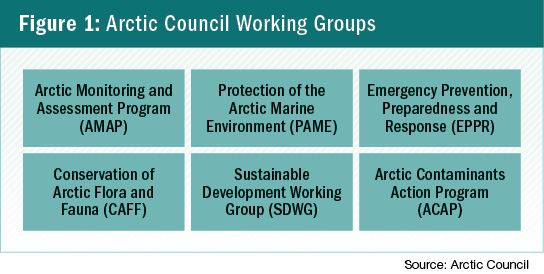
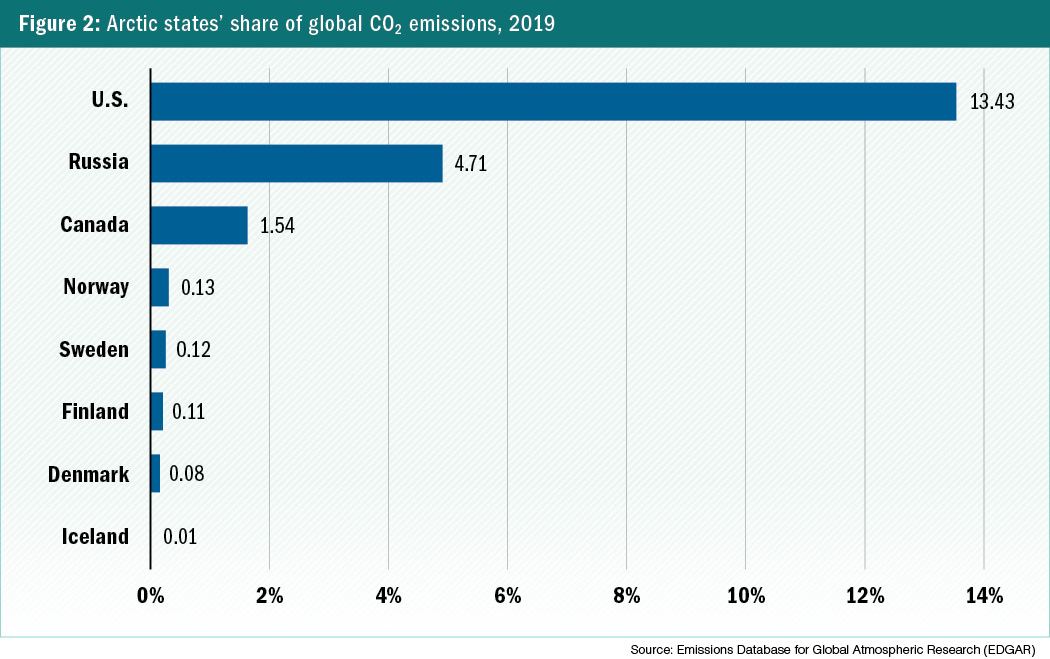
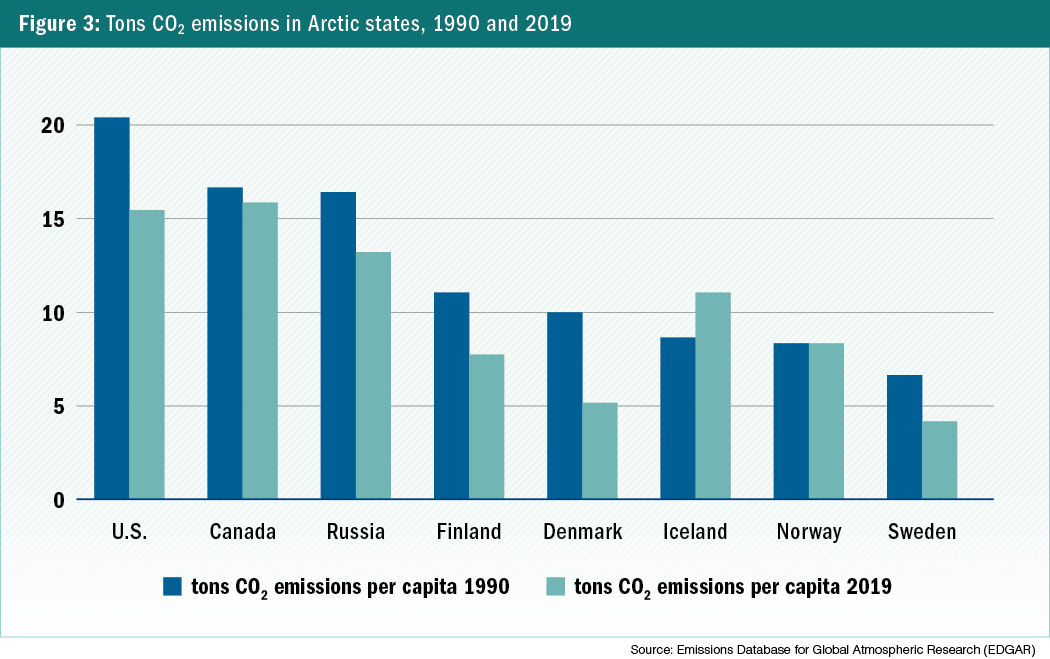

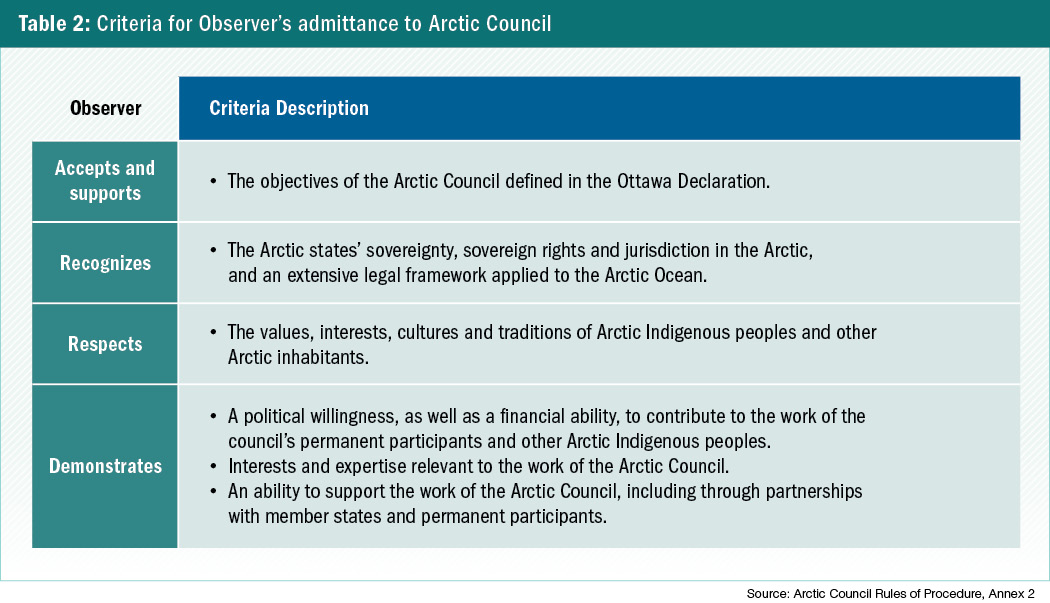
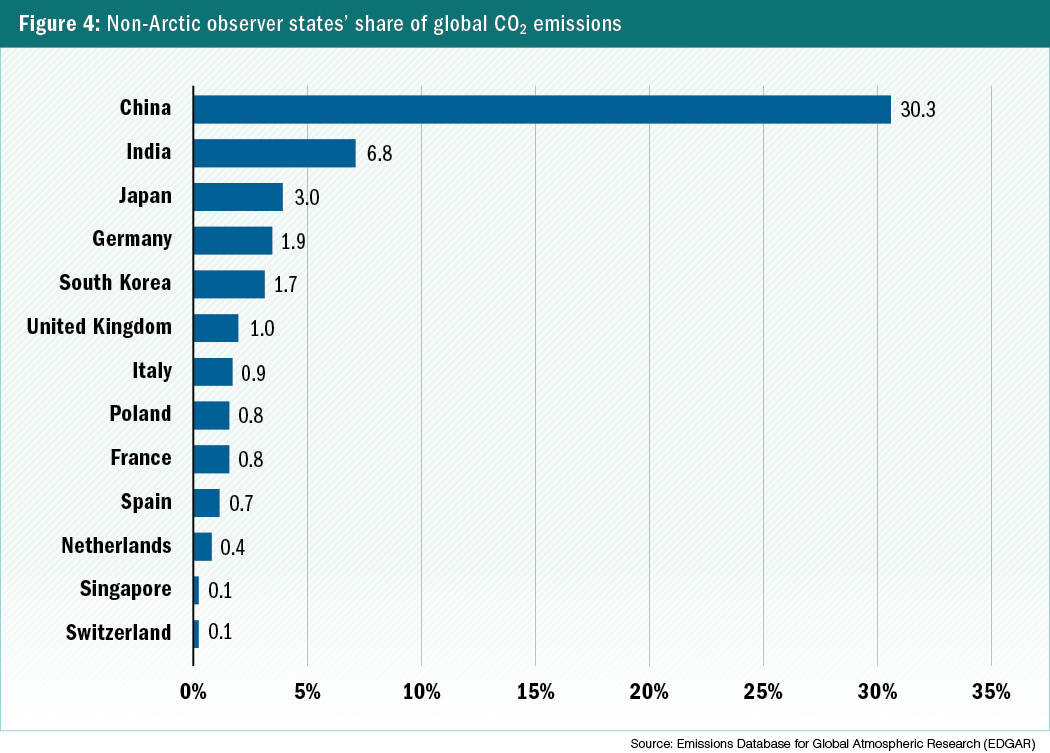
Comments are closed.